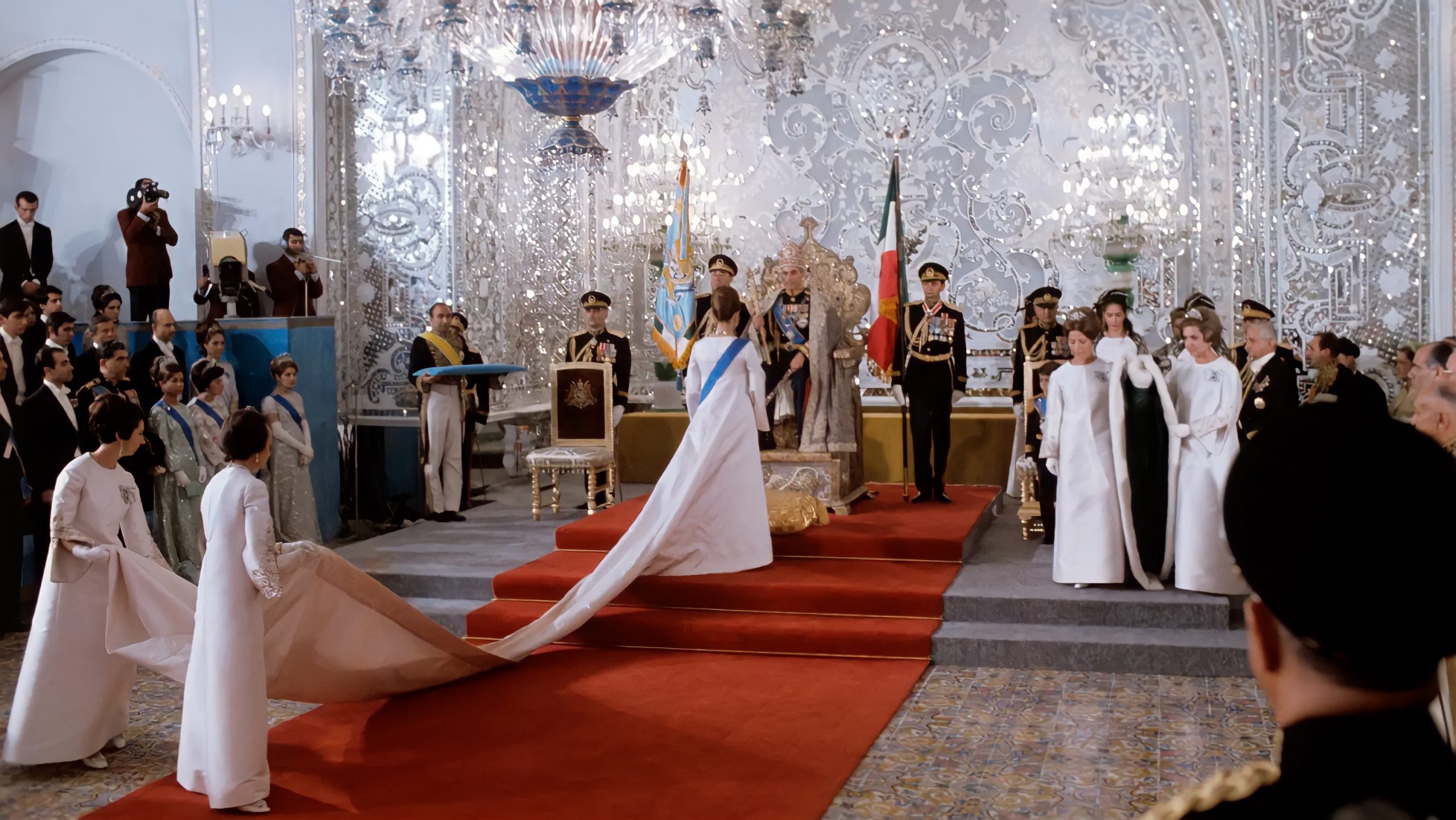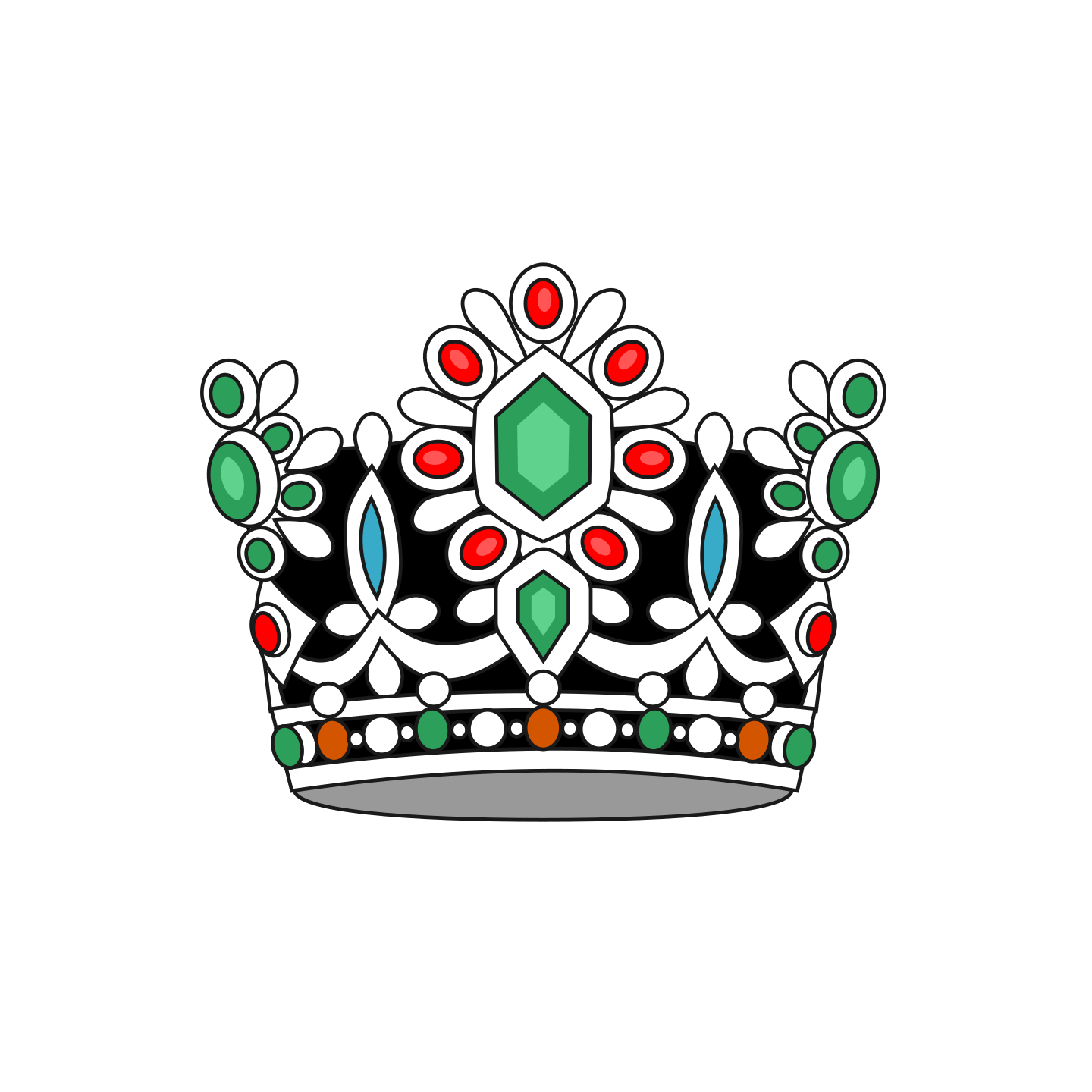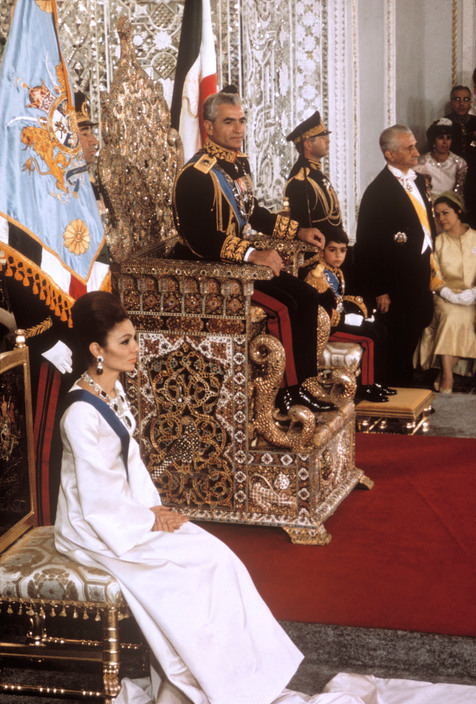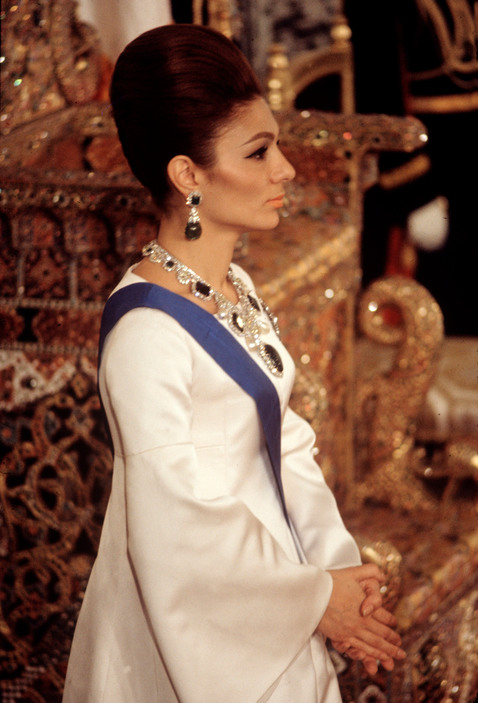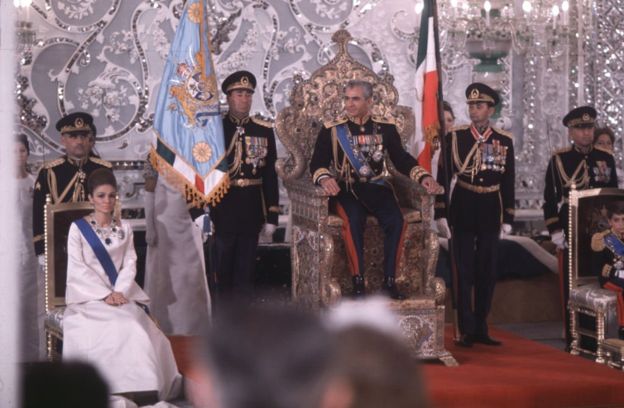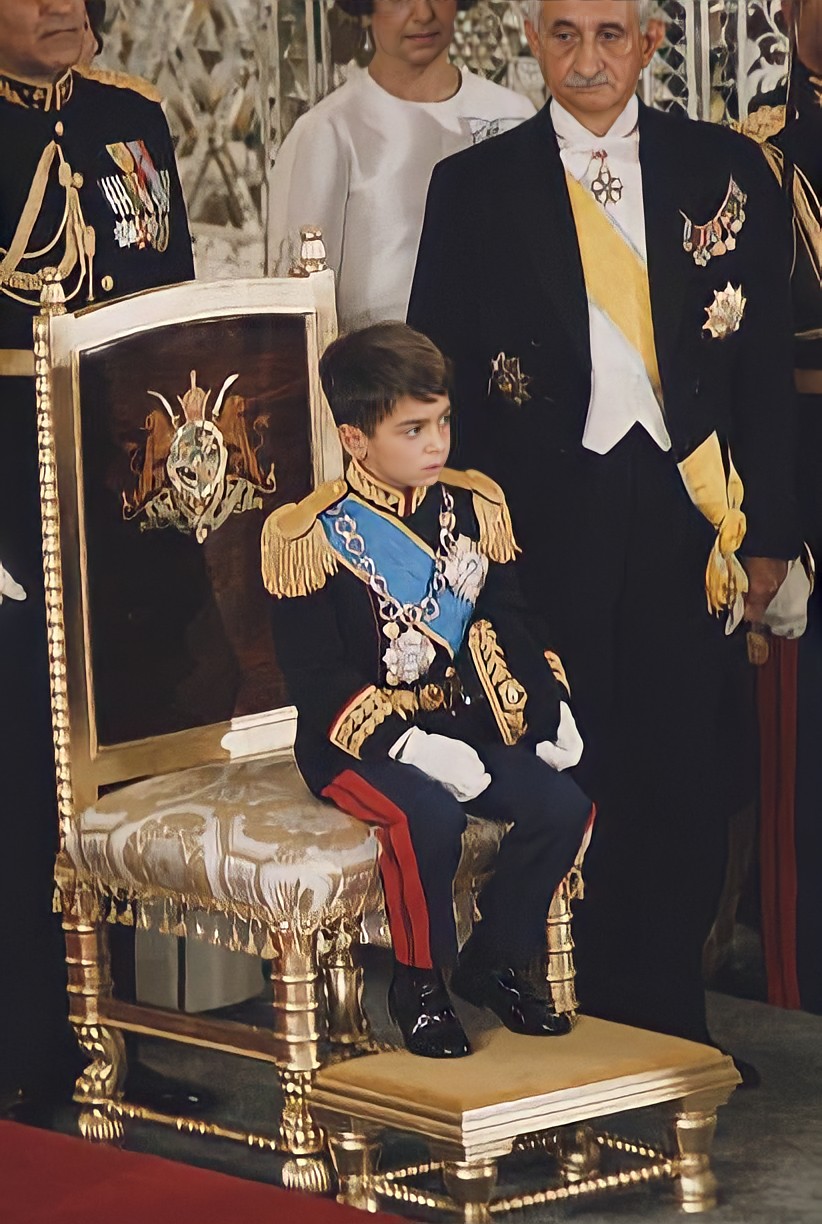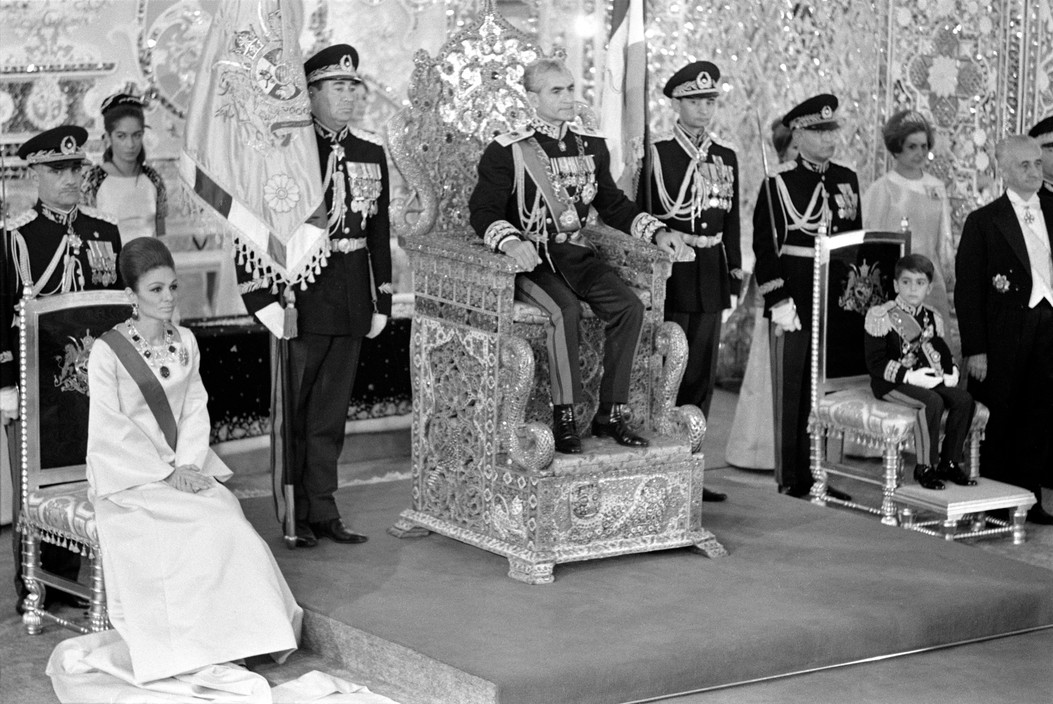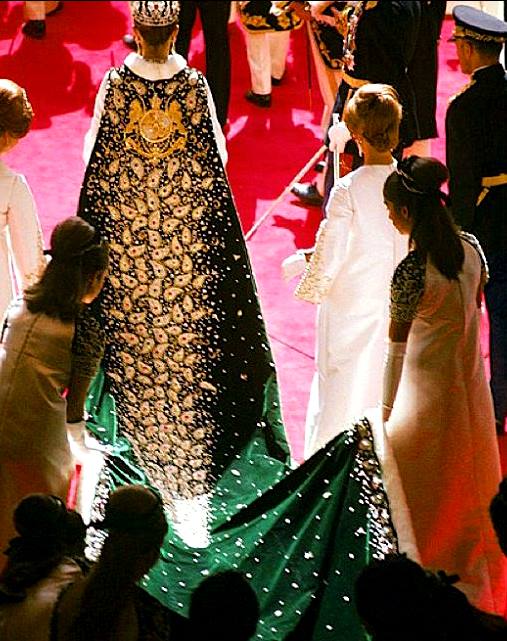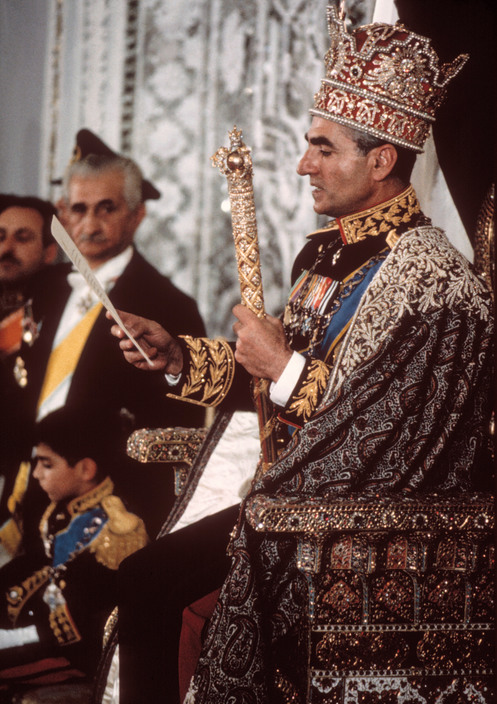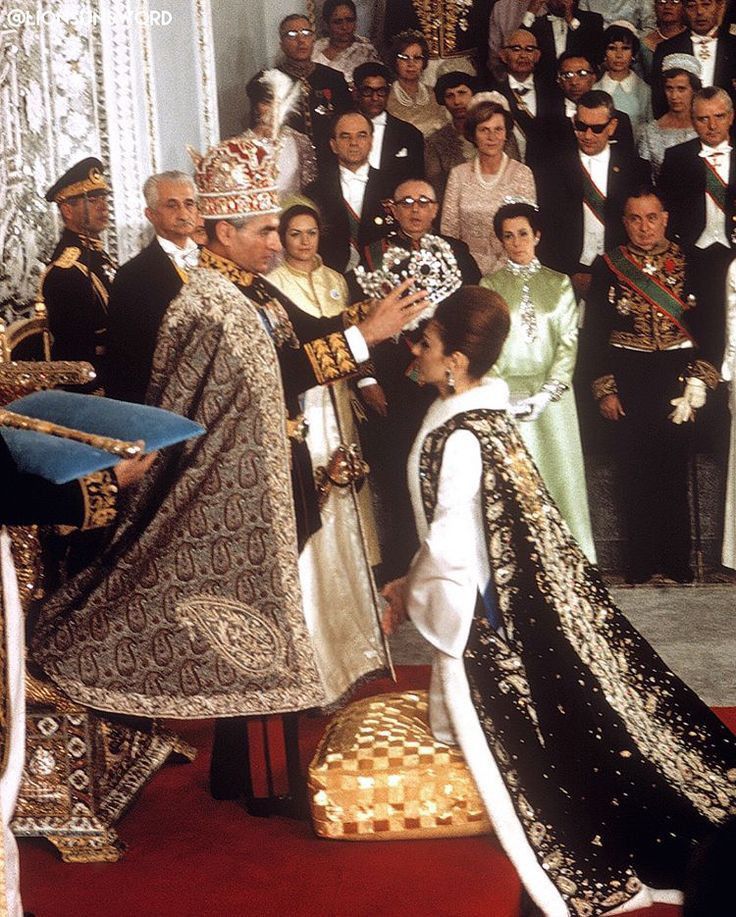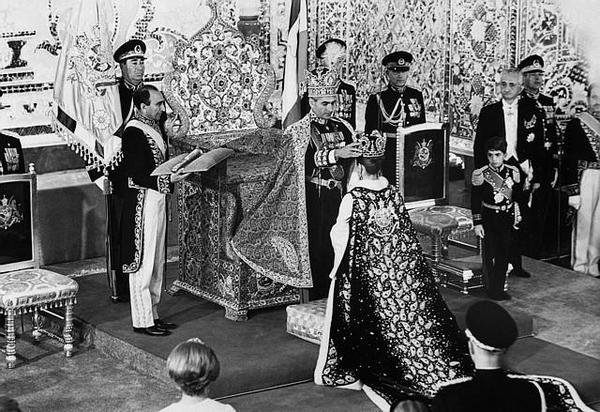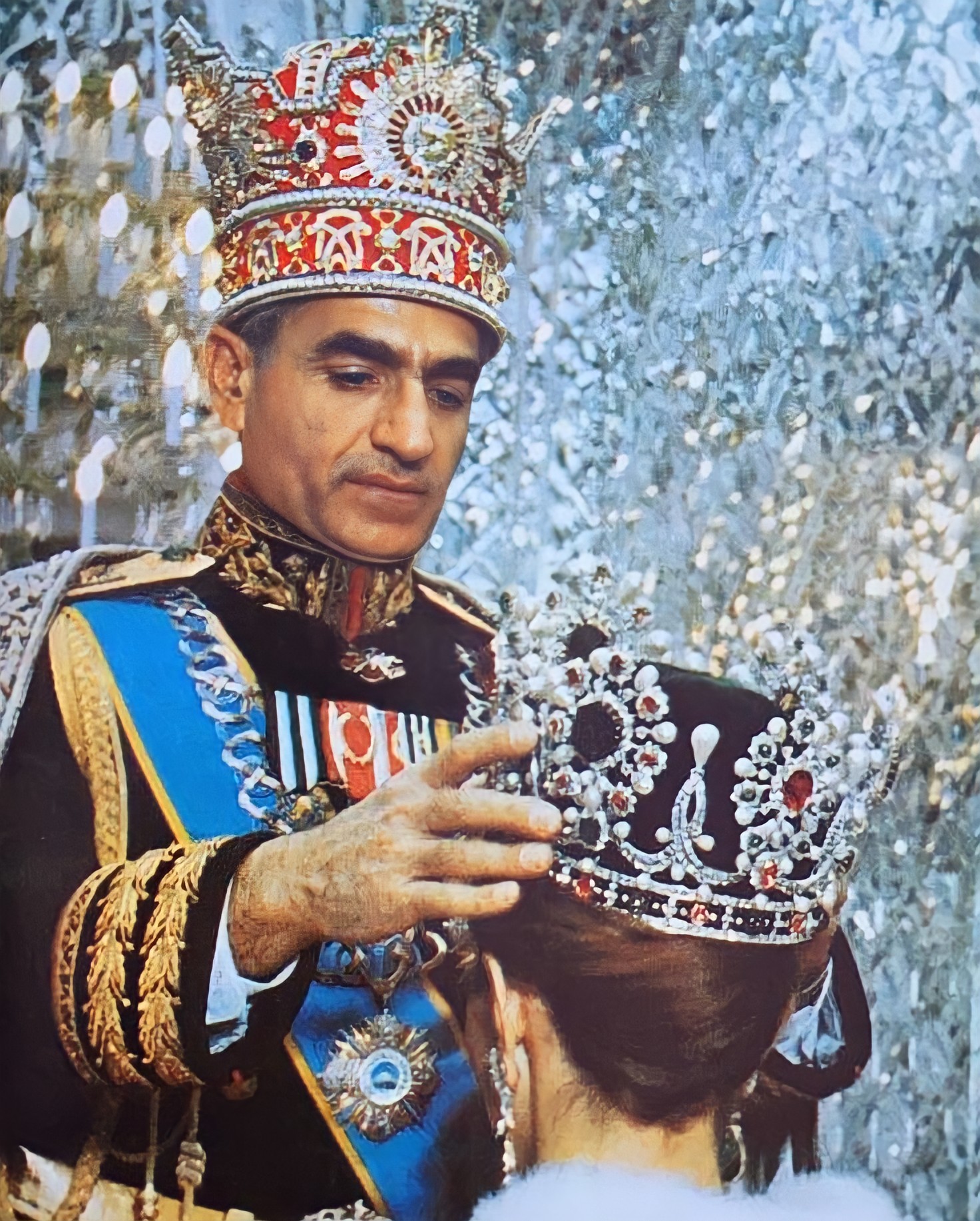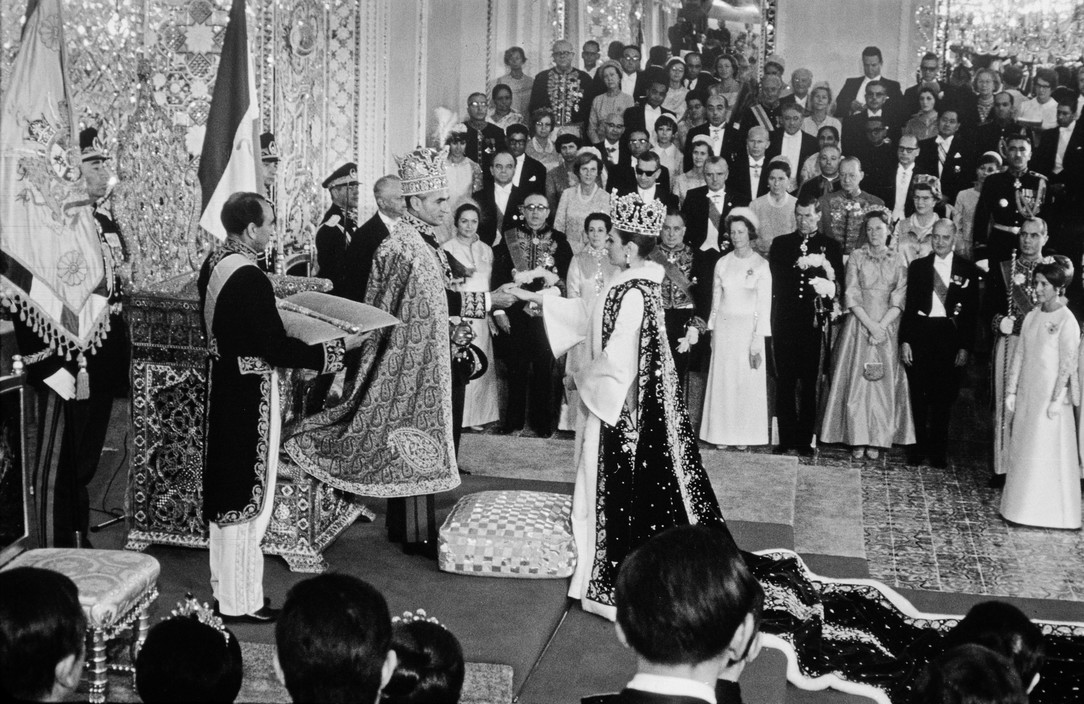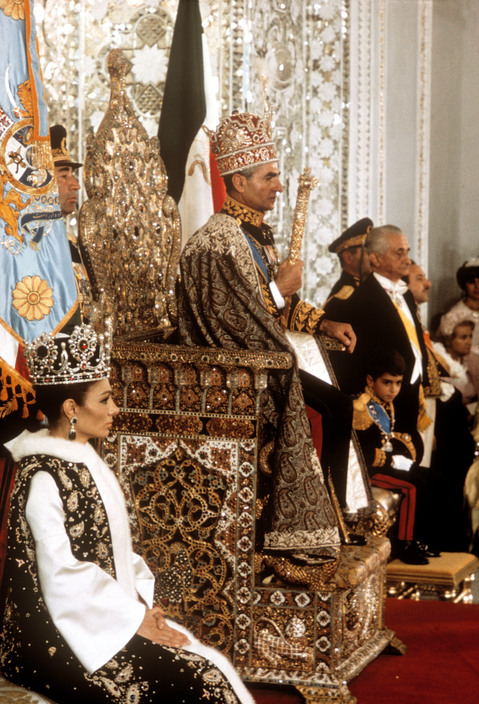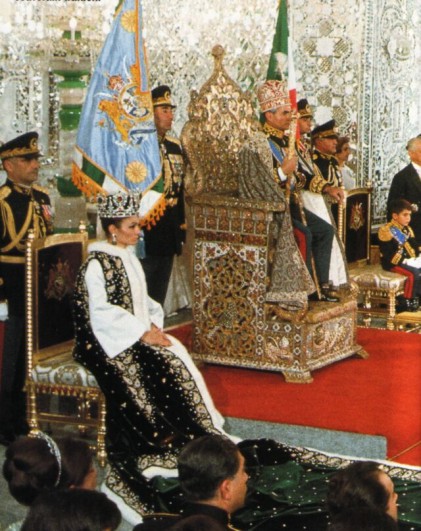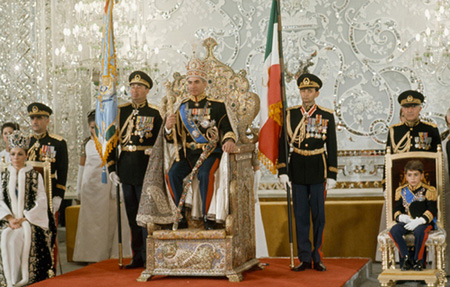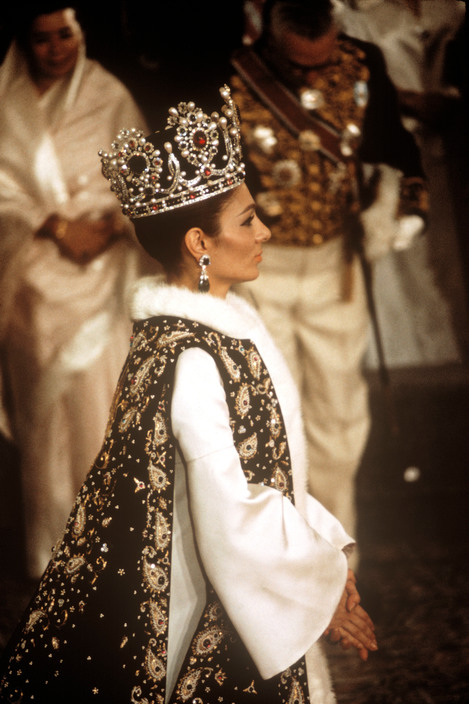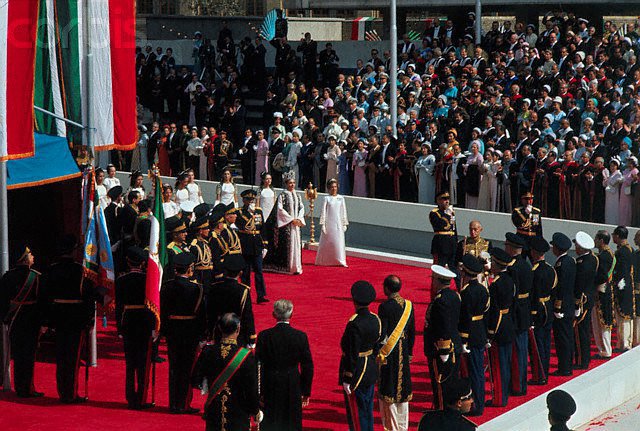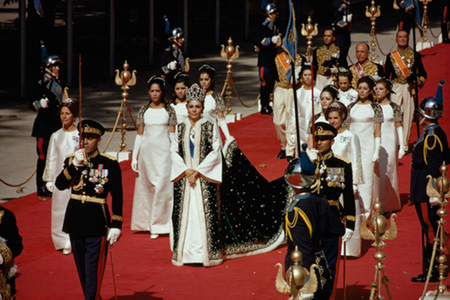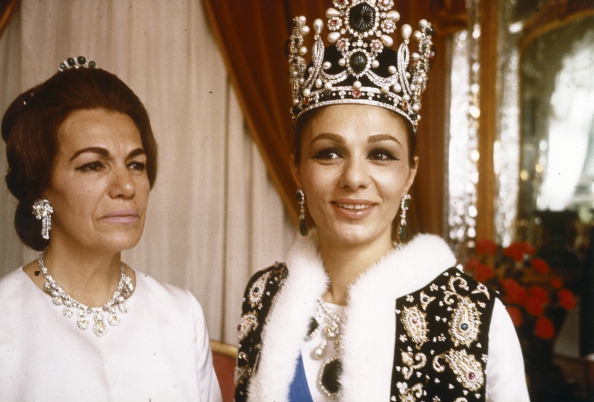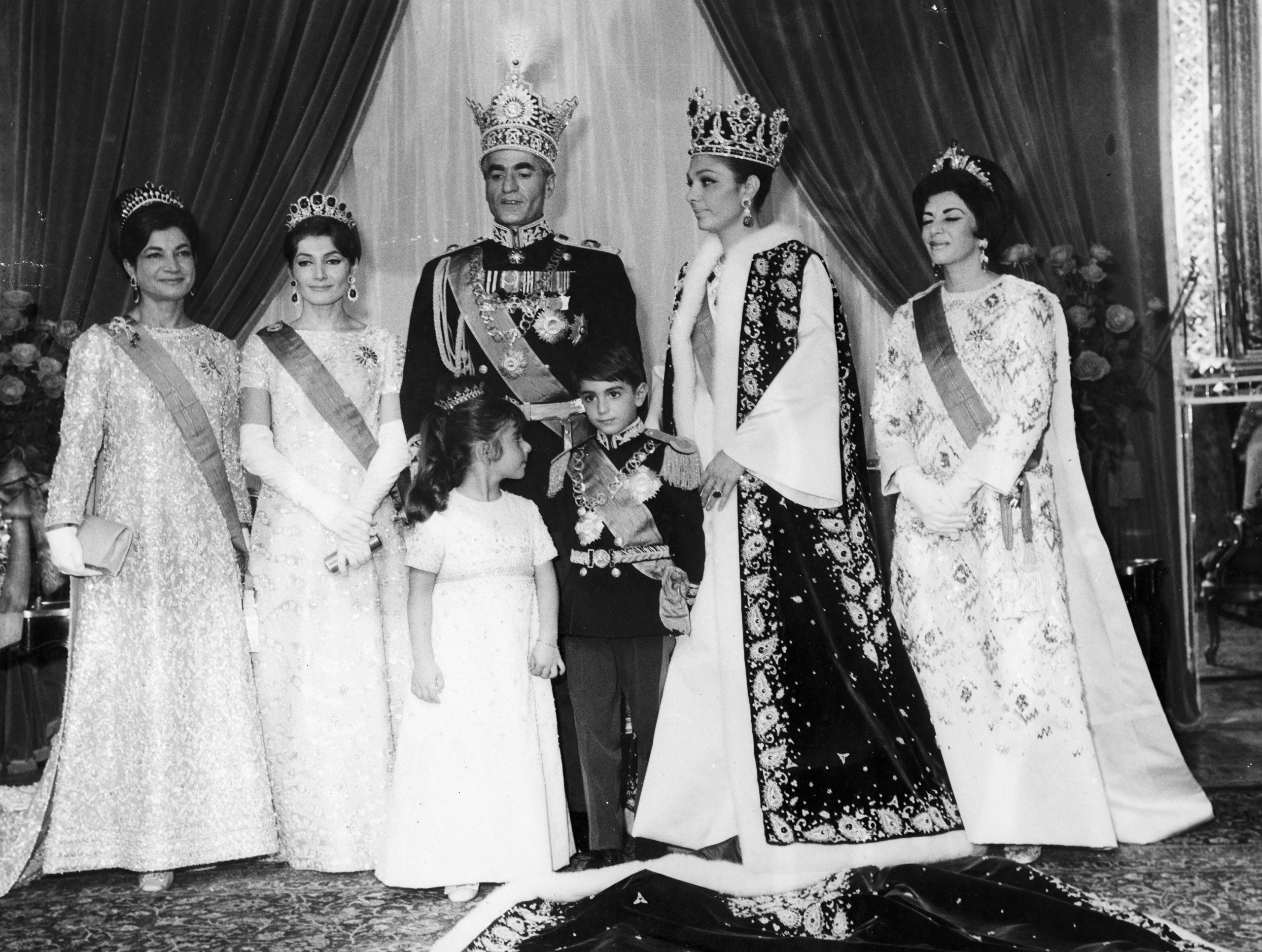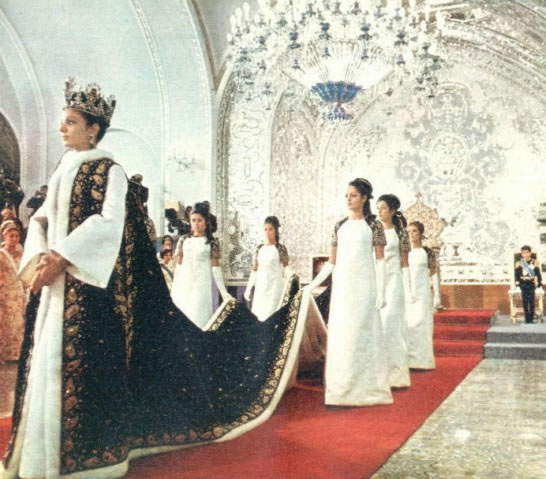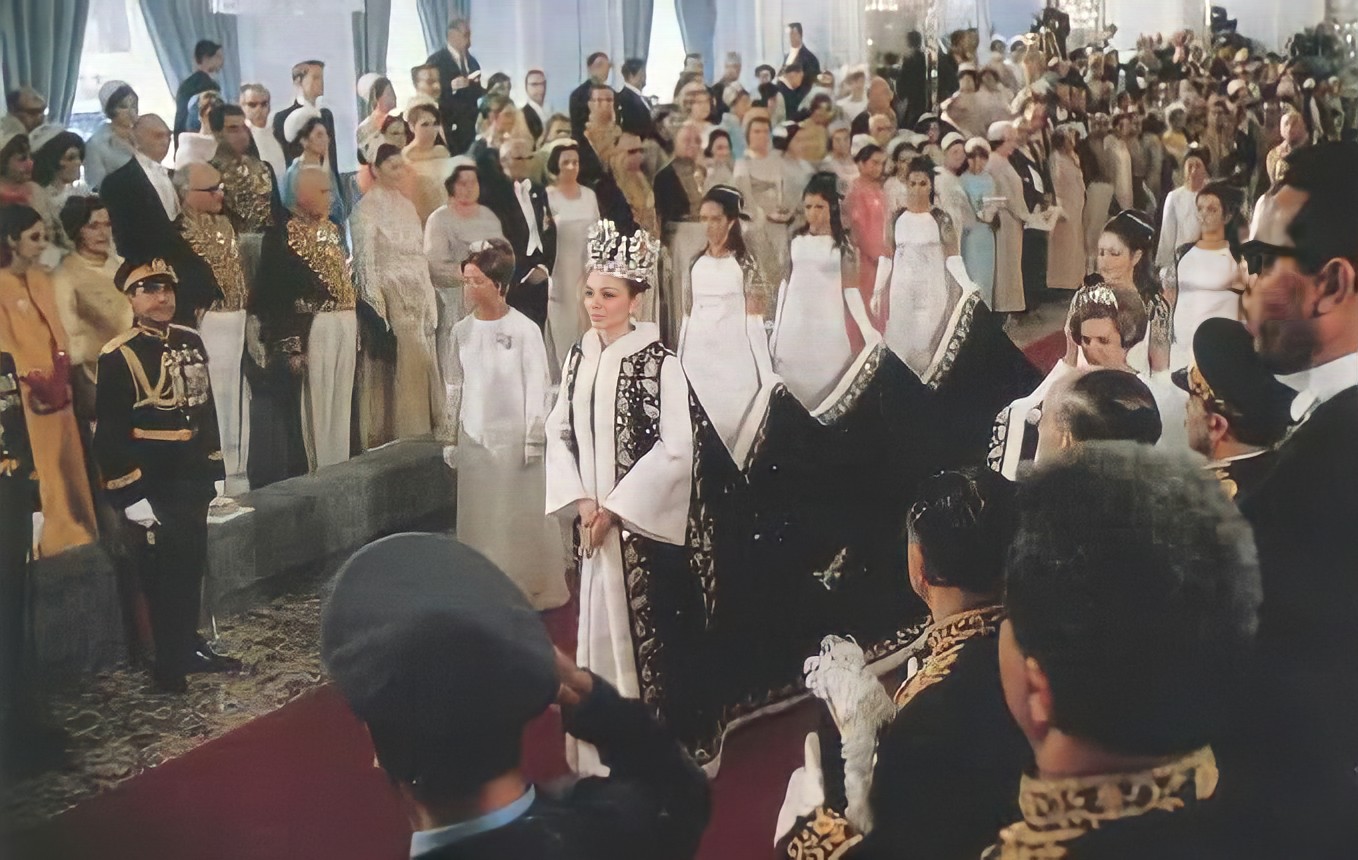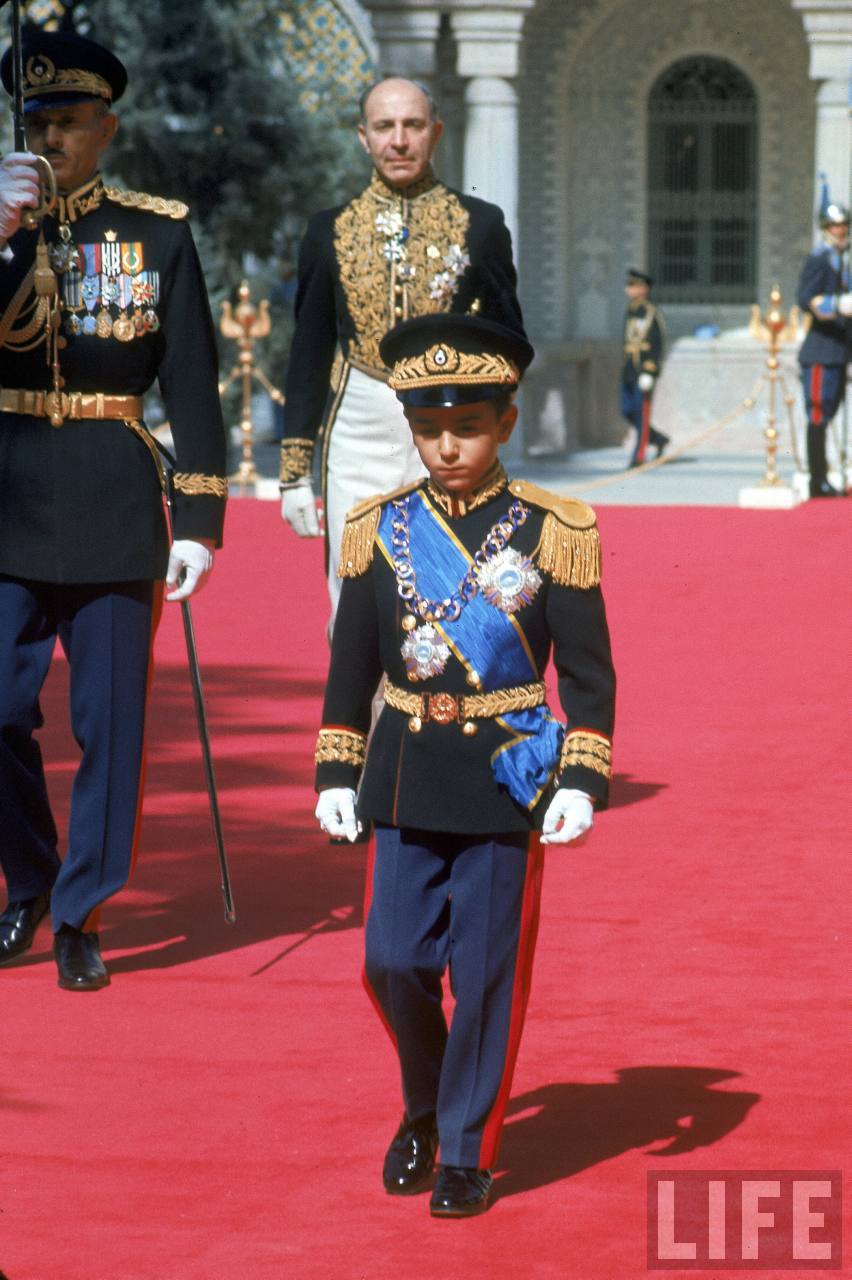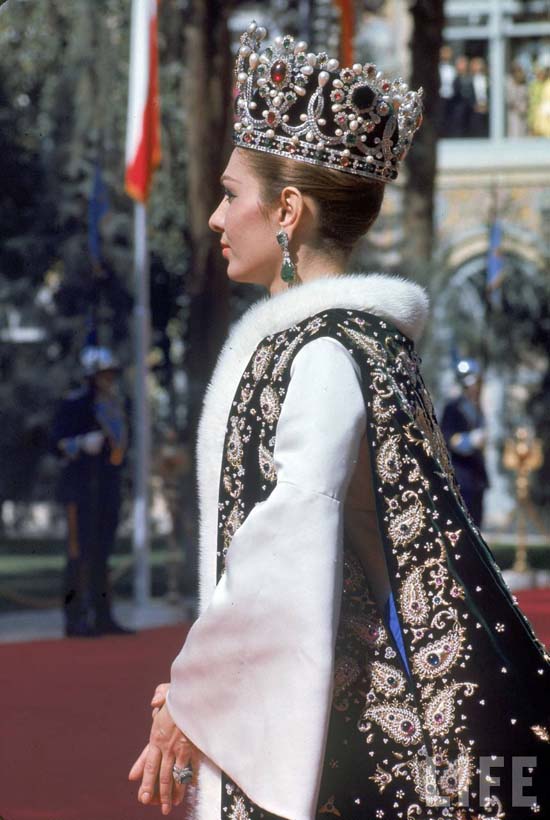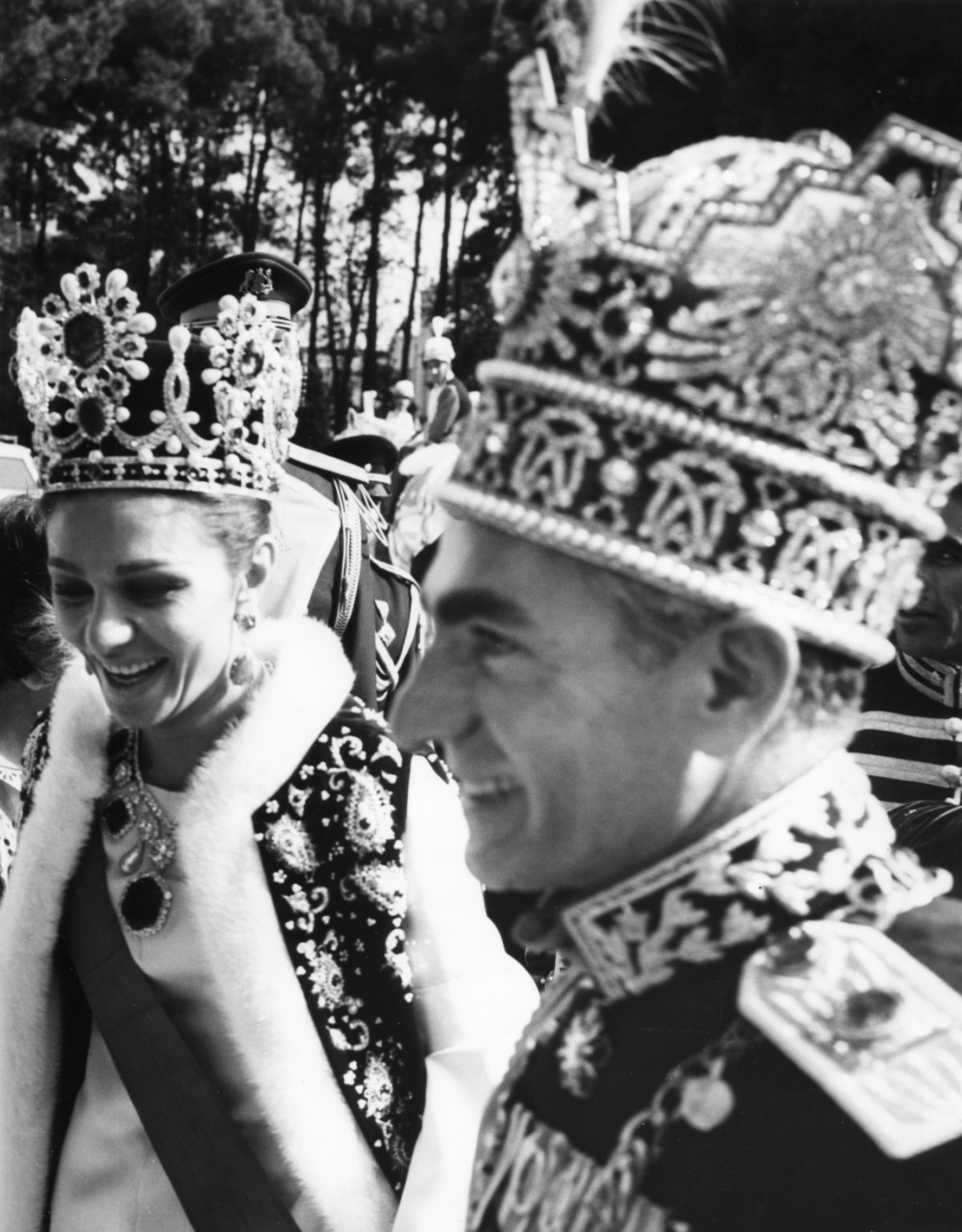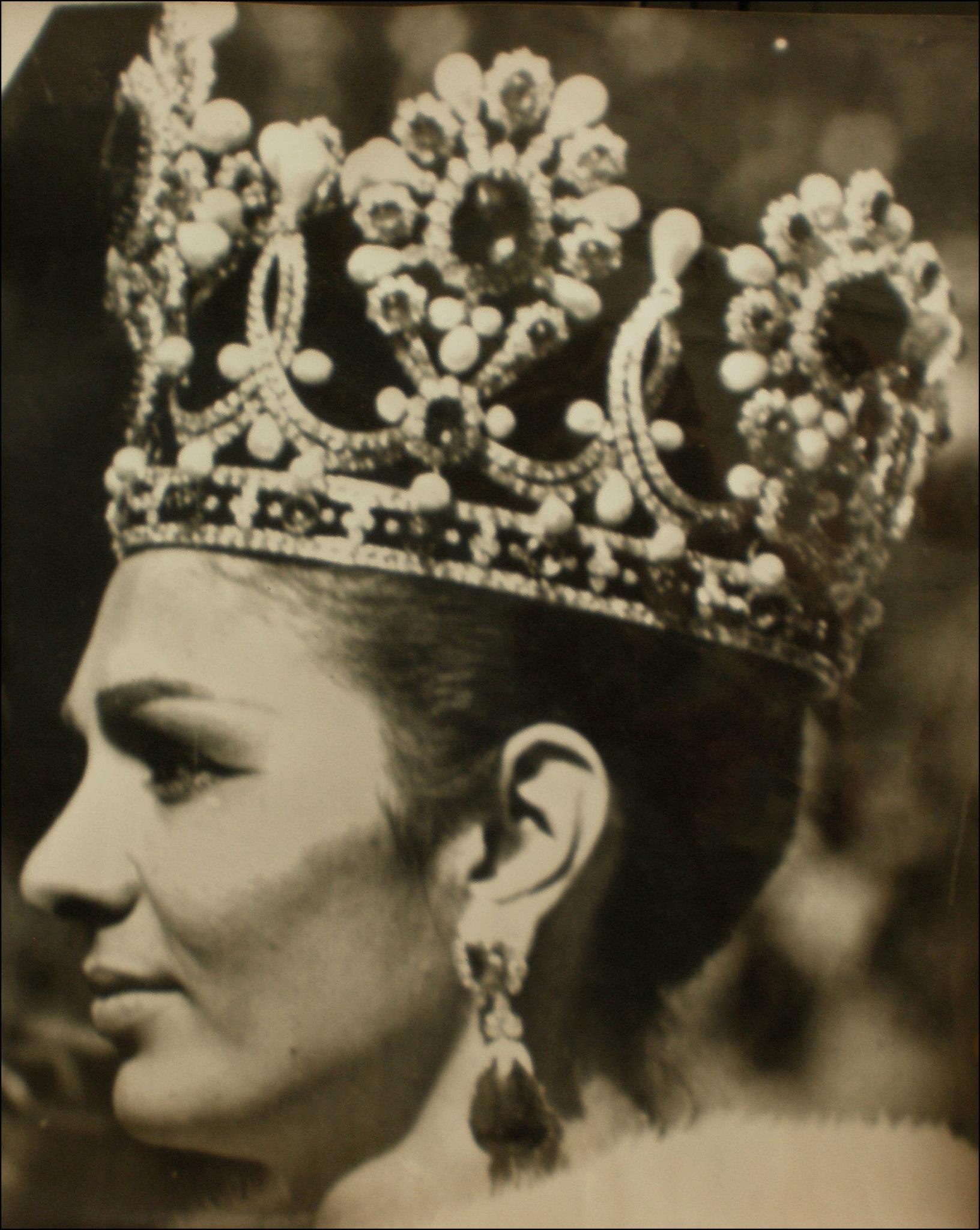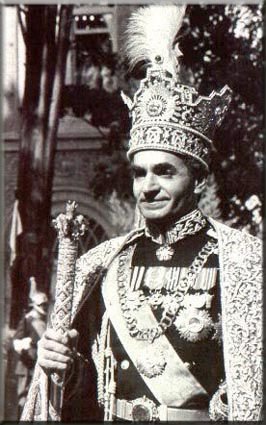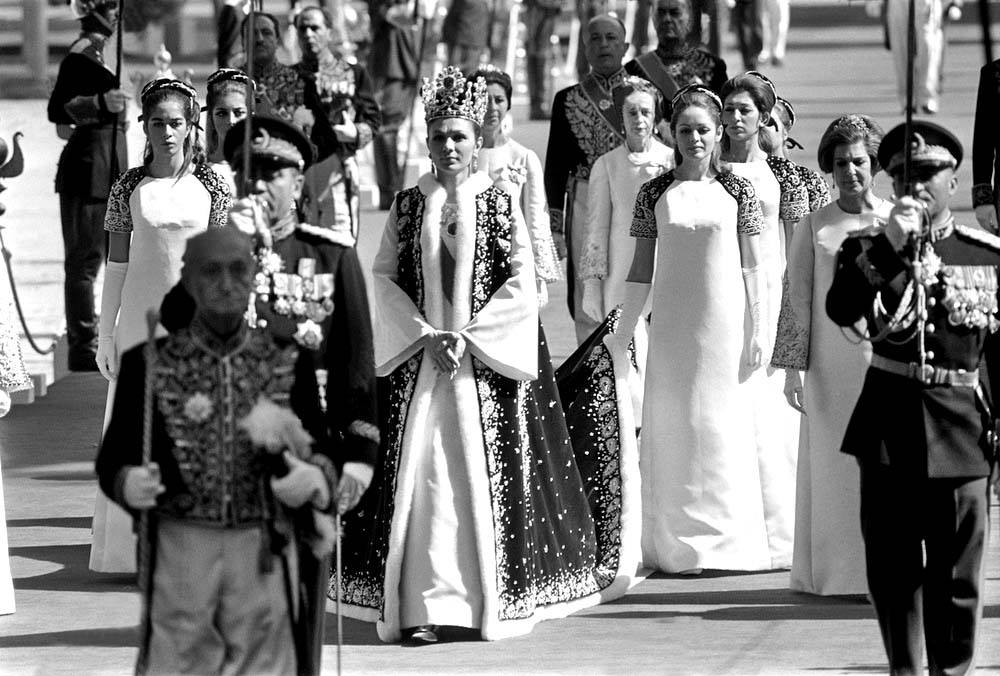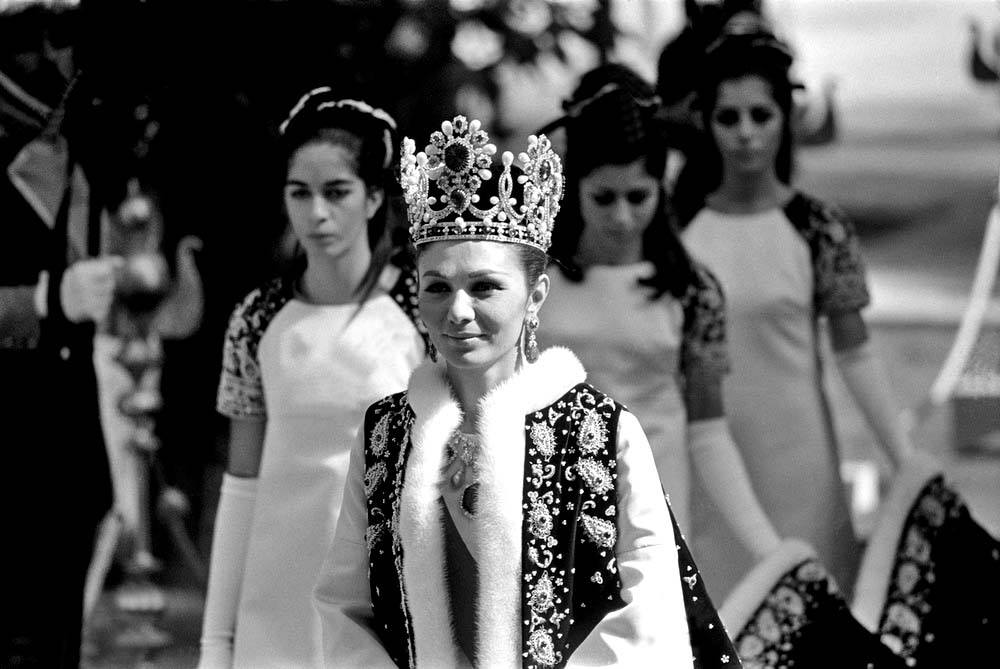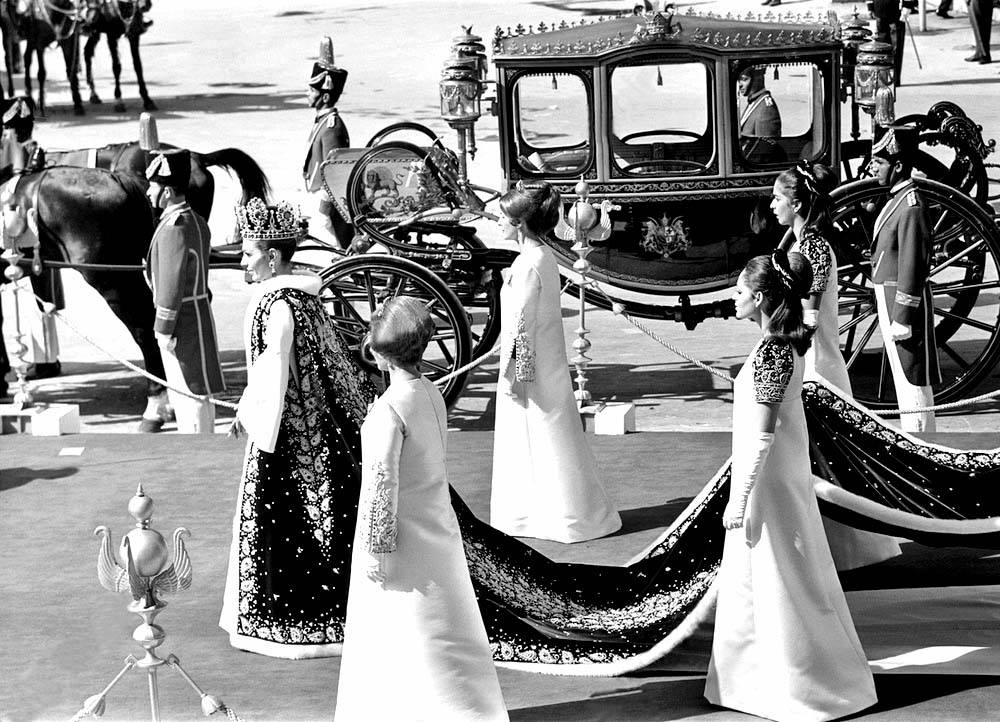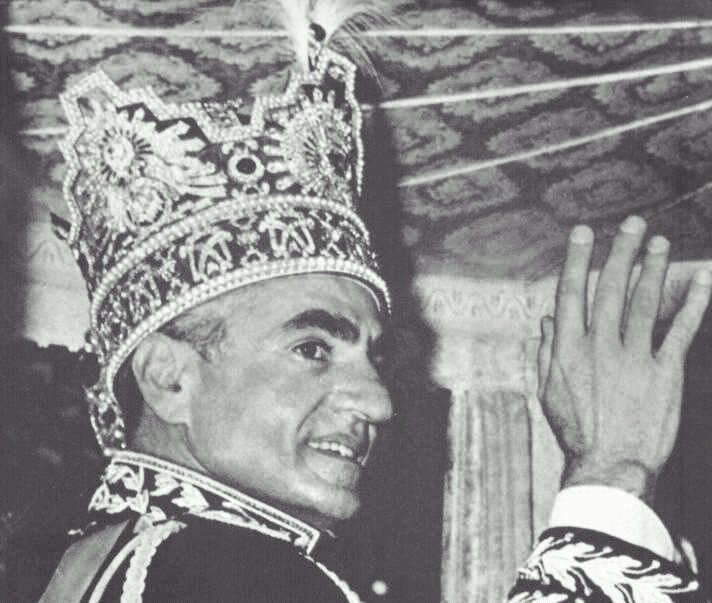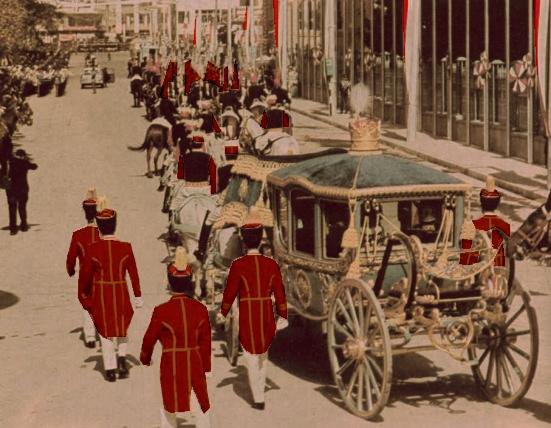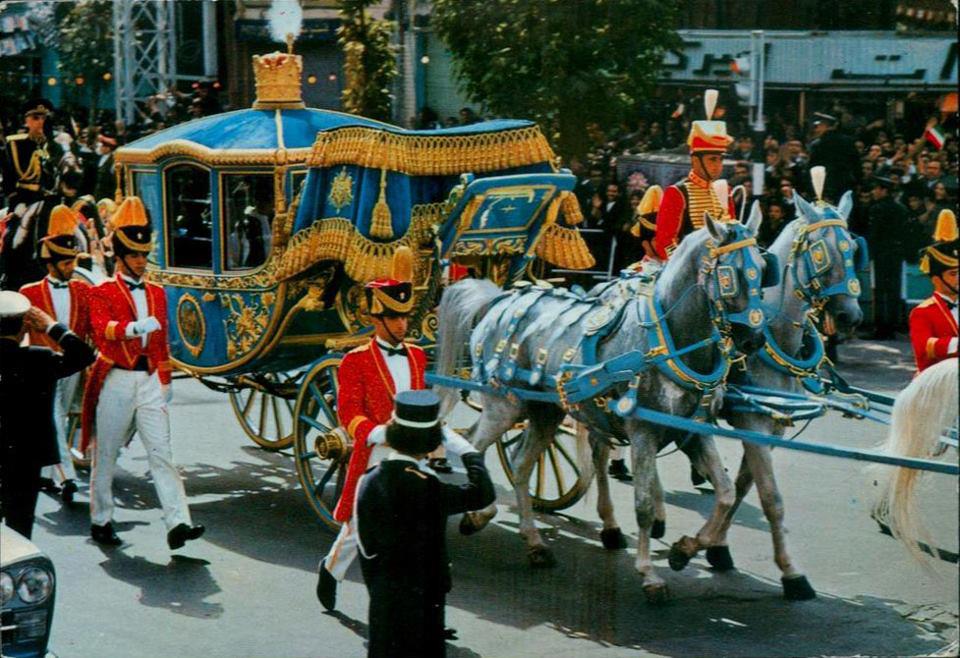Mohammad Reza Shah Pahlavi and Shahbanou Farah Pahlavi
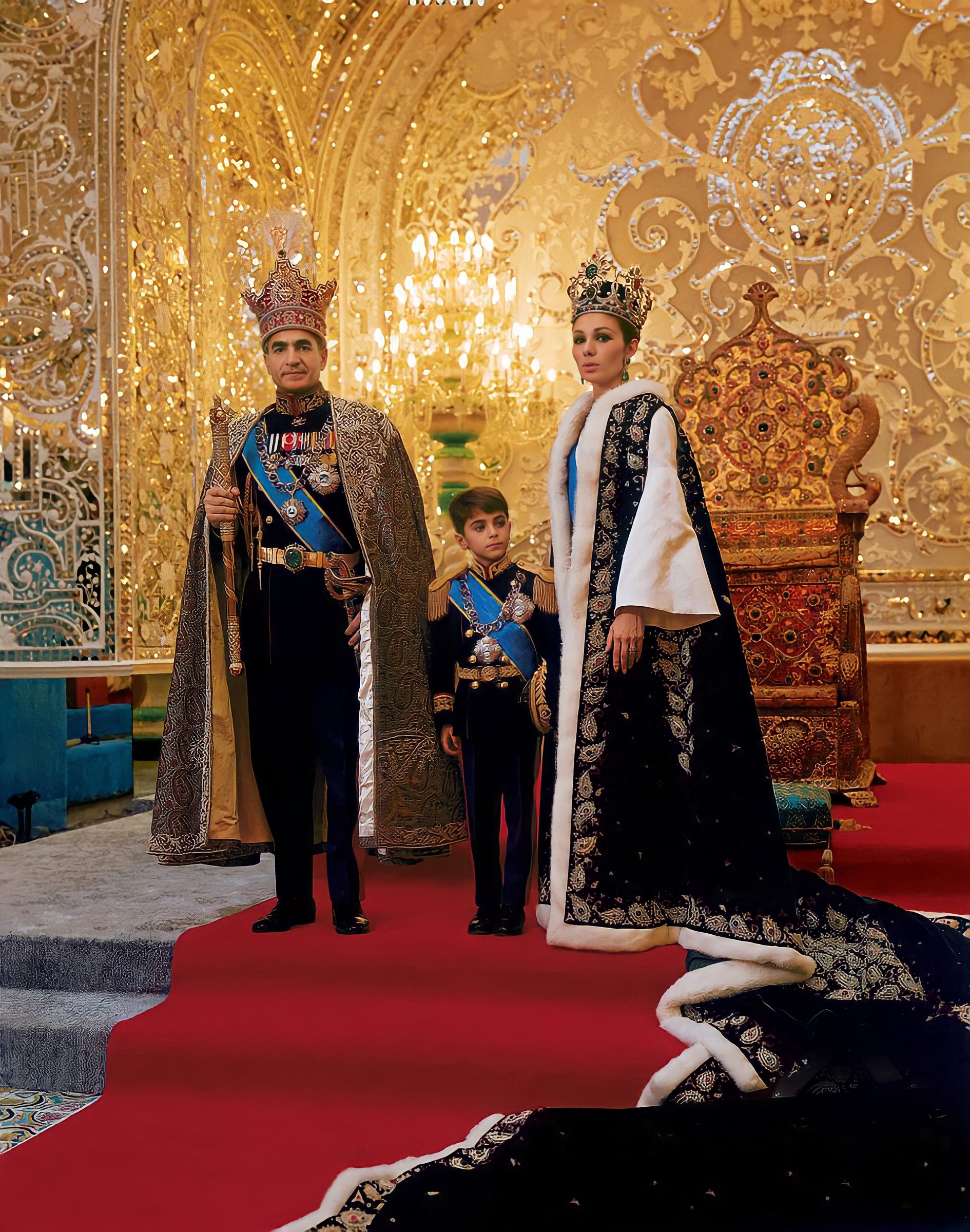
The Coronation of Shah Mohamed Reza Pahlavi was undoubtedly one of the most fantastic events of Persian long royal history, watched all over the world with unprecedented curiosity, for a country usually away from the scenes of royal glitter.
The curiosity was perhaps bigger due to the fact that marking the new role the Shah wanted to give women in Iranian society (in the amendment to the Constitution in 1967.
It was decided that the Shahbanou would be regent in case of death of the Shah during the minority of the heir to the throne), his wife, Empress Farah, the Shahbanou of Iran, would become the first Empress ever to be crowned in a history of 2500 years. And for that purpose, it was necessary to order a new crown.
The honor fell on the famous Parisian jeweler Van Clef & Arpels, who created the most awesome crown, along with a new parure to be worn by the sisters of the Shah at the Coronation.
Also specially ordered for the event was the Coronation Coach, made in Vienna by Josef Klickmann. The carriage was sent by plane to Tehran in peace and was built there. In blue and gold, it was a replica of the Austrian Imperial Carriage used by the Habsburgs. This was one of the most harshly criticized expenses of the Coronation because the Imperial had already a carriage, which had been used by the Shah’s father in 1926 and would be used again by the Crown Prince during the procession. The result was, nevertheless, marvelous. A gilded crown, a replica of the Shah’s Crown, topped the carriage and in the door, the coat of arms of the Imperial Family was also in gold.
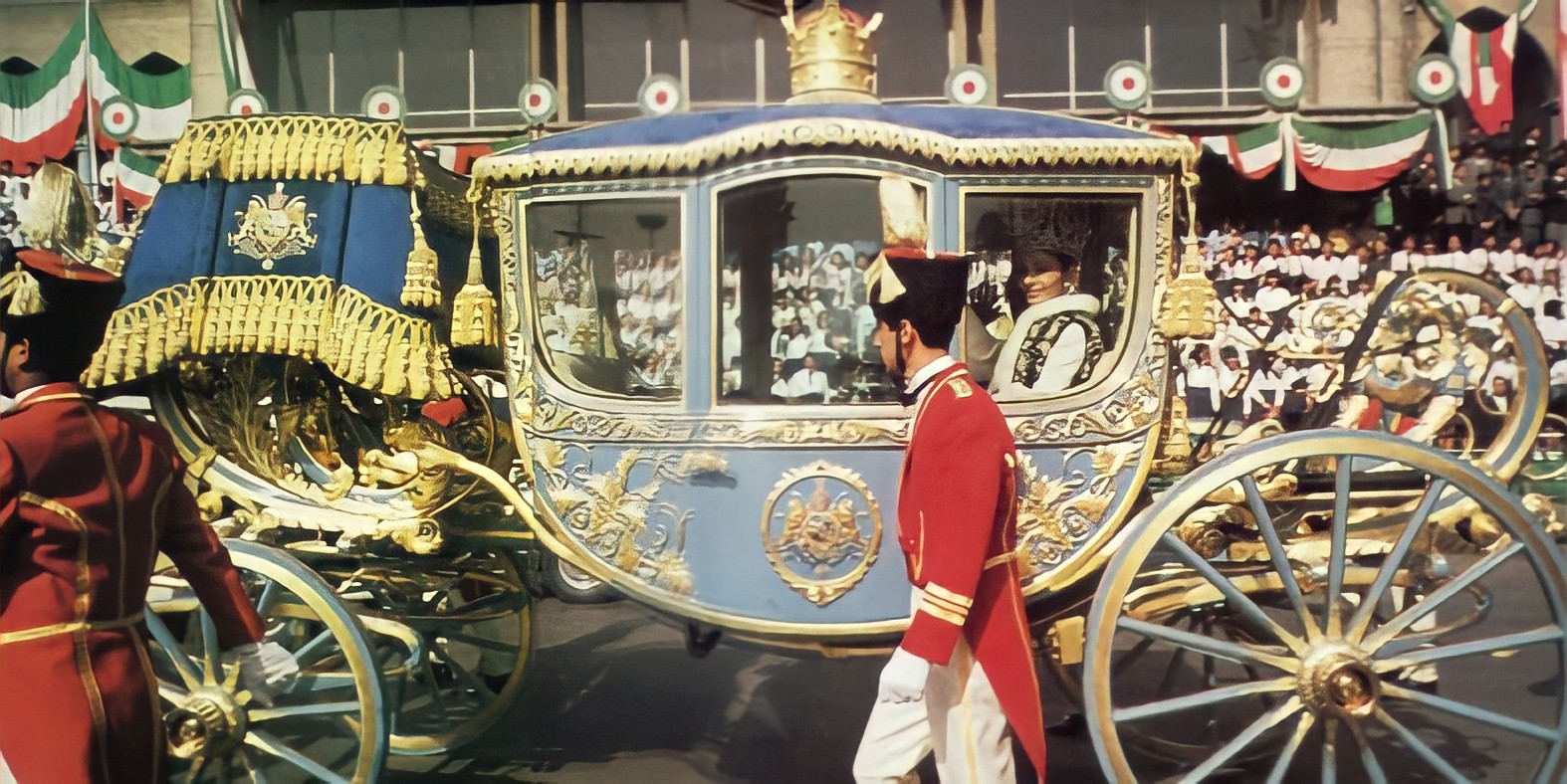
It was decided that the Coronation ceremony would be held in the magnificent Grand Hall of the Golestan Palace, the dramatically stunning former home of the Qajar Dynasty. Also named Grand Throne Room, this magnificent hall was dominated by the Sun Throne, also known as the Peacock Throne, but before it was intended, ever since being built, as a museum room. This remarkably long hall, 150 meters long, was one of those specially refurbished for the occasion. The fact that the Grand Hall could only take around 500 guests, made that in the gardens of the Golestan special tribunes were built to accommodate around 5000 other guests.
